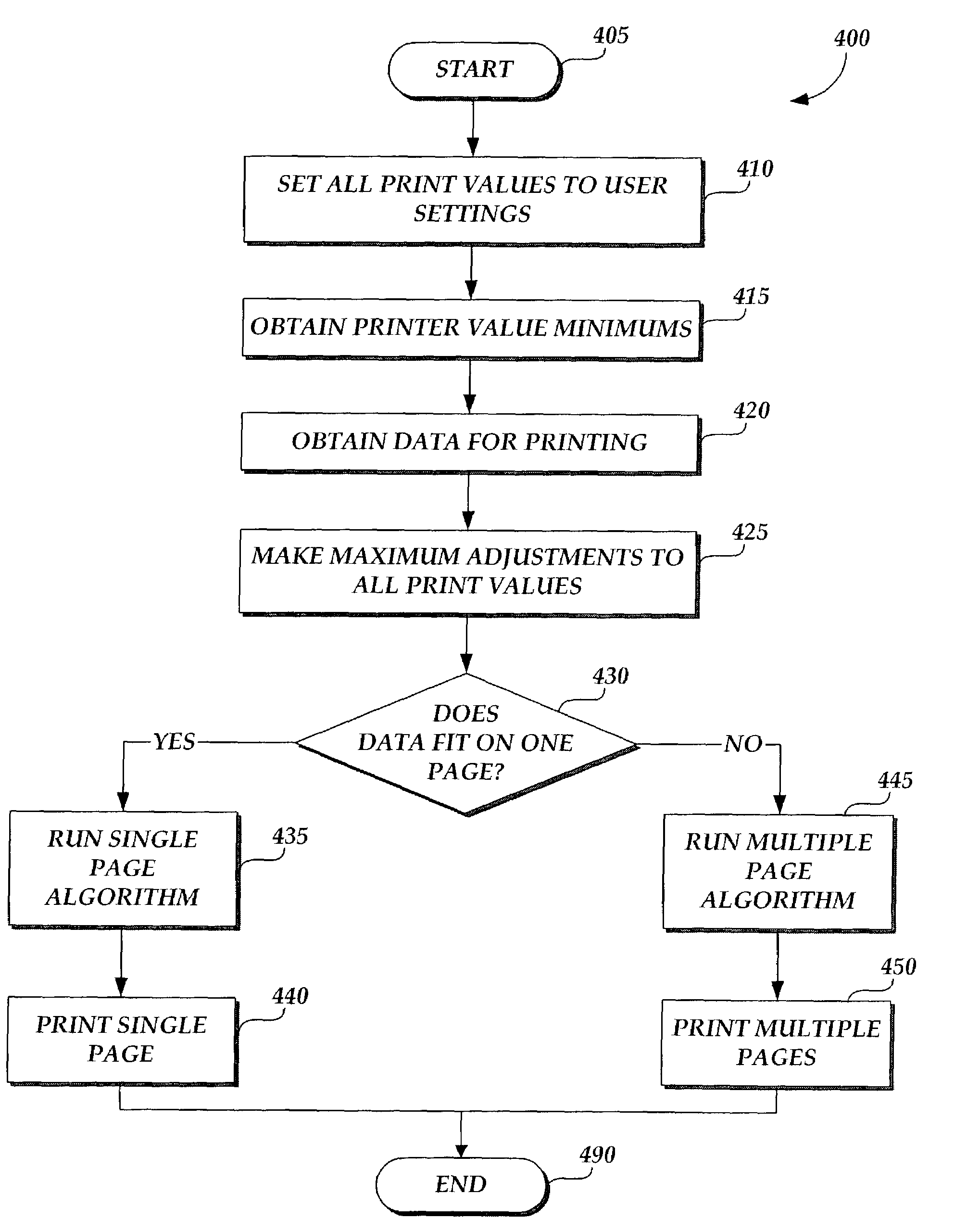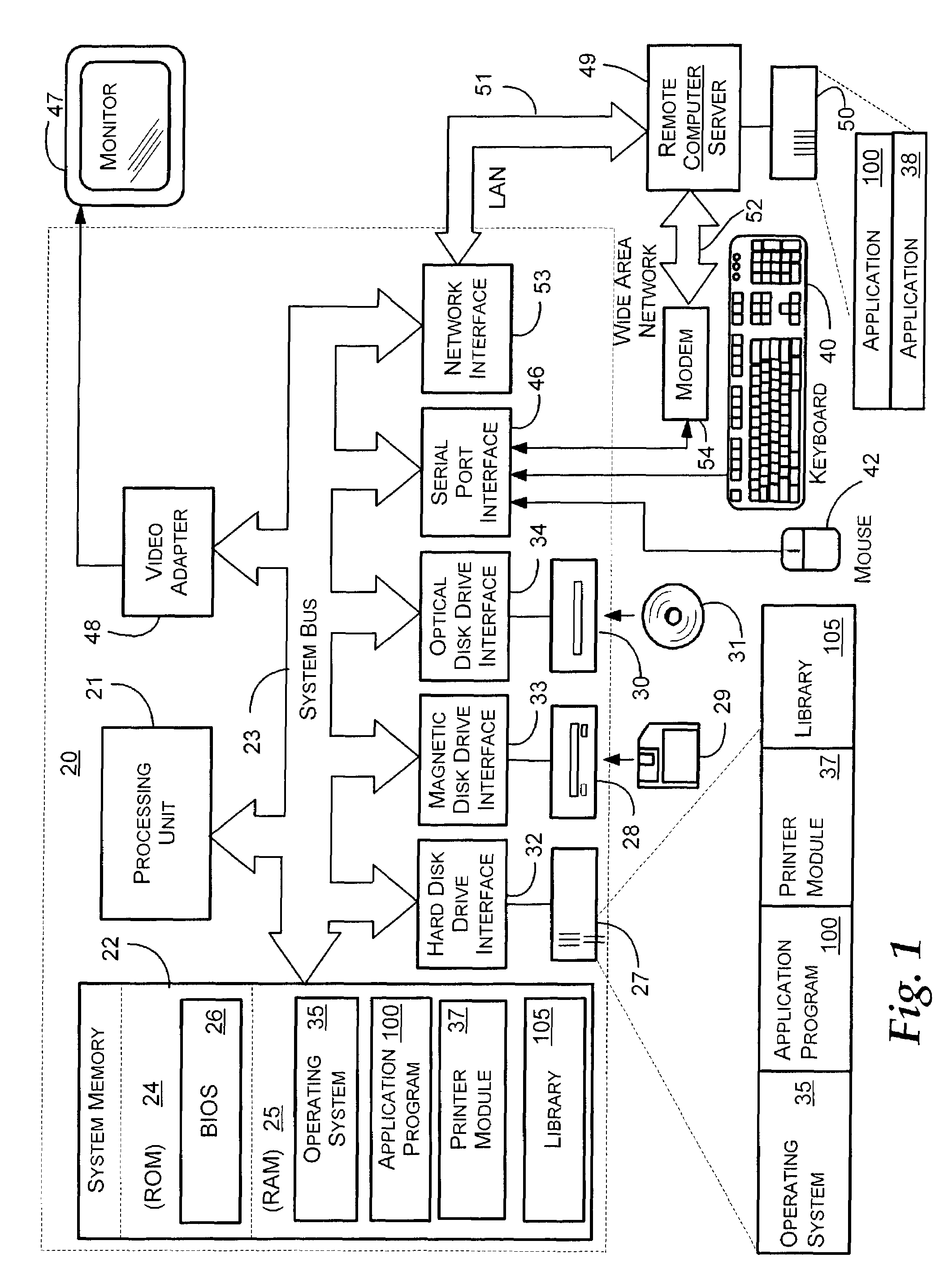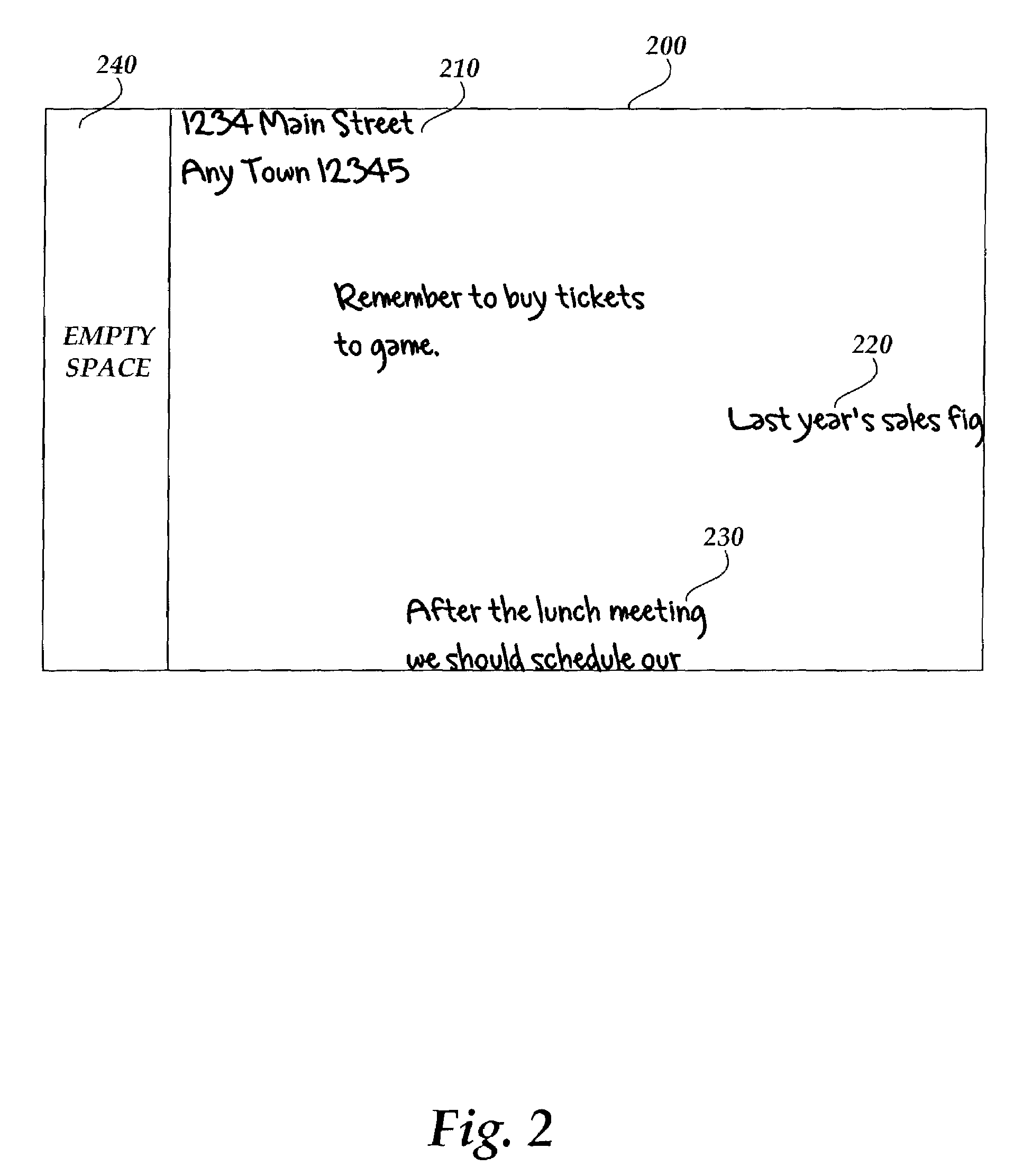Best fit printing
a printing and fit technology, applied in the field of best fit printing, can solve the problems of affecting the effect of printing, particularly undesirable results, and affecting the effect of free form text or data entry, so as to reduce the bottom margin, reduce the right margin, and reduce the left margin
- Summary
- Abstract
- Description
- Claims
- Application Information
AI Technical Summary
Benefits of technology
Problems solved by technology
Method used
Image
Examples
Embodiment Construction
[0016]The following description of embodiments of the present invention is made with reference to the above-described drawings wherein like numerals refer to like parts or components throughout the several figures. The present invention is directed to methods and systems for automatically adjusting print settings to optimize the fit of text, data, and / or images of printed pages.
[0017]FIG. 1 is a diagram of a computer and associated peripheral and networked devices that provide and exemplary operating environment for the present invention. FIG. 1 and the following discussion are intended to provide a brief, general description of a suitable computing environment in which the invention may be implemented. While the invention will be described in the general context of an application program that runs on an operating system in conjunction with a personal computer, those skilled in the art will recognize that the invention also may be implemented in combination with other program module...
PUM
 Login to View More
Login to View More Abstract
Description
Claims
Application Information
 Login to View More
Login to View More - R&D
- Intellectual Property
- Life Sciences
- Materials
- Tech Scout
- Unparalleled Data Quality
- Higher Quality Content
- 60% Fewer Hallucinations
Browse by: Latest US Patents, China's latest patents, Technical Efficacy Thesaurus, Application Domain, Technology Topic, Popular Technical Reports.
© 2025 PatSnap. All rights reserved.Legal|Privacy policy|Modern Slavery Act Transparency Statement|Sitemap|About US| Contact US: help@patsnap.com



